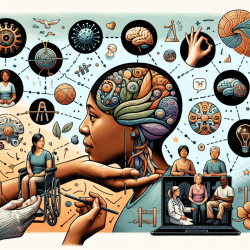In the ever-evolving landscape of pediatric rehabilitation, the transition to telerehabilitation has presented both opportunities and challenges. A recent study titled "Co-designing solutions to enhance access and engagement in pediatric telerehabilitation" offers valuable insights into how practitioners can improve their skills and enhance service delivery. The research, conducted by Reitzel et al., employed an Experience-Based Co-Design (EBCD) approach to identify barriers and develop solutions that improve access and engagement in telerehabilitation services.
The 3C's: Communication, Consistency, and Connection
The study identified three key factors—Communication, Consistency, and Connection (the 3C's)—that significantly impact the telerehabilitation experience. Here's how practitioners can leverage these findings:
1. Communication
Effective communication is the cornerstone of successful telerehabilitation. The study found that many families felt unprepared for sessions due to a lack of clear communication. Practitioners can enhance communication by:
- Providing detailed information about what to expect in telerehabilitation sessions.
- Ensuring that communication is multimodal, using both emails and phone calls as per family preferences.
- Tailoring the amount of information shared to avoid overwhelming families.
2. Consistency
Consistency in service delivery is crucial for building trust and ensuring effective therapy. The study highlighted the need for standardized practices across clinicians. Practitioners can improve consistency by:
- Developing clear, step-by-step guidelines for telerehabilitation sessions.
- Offering flexible service options to meet individual family needs.
- Ensuring that all clinicians are trained to follow the same protocols.
3. Connection
Building a strong connection between clinicians and families enhances engagement and therapeutic outcomes. The study recommends:
- Scheduling initial appointments with caregivers only, to discuss goals and preferences.
- Using tools like "Get to Know My Child" forms to understand the child's interests and needs.
- Regularly updating families on therapy progress and upcoming sessions.
Co-Designed Solutions
The study's co-designed solutions aim to enhance the 3C's before, during, and after telerehabilitation sessions:
Before the Visit
- Initial caregiver-only appointments to discuss goals and preferences.
- Video and text-based resources to help families understand what to expect.
- Consistent use of "Get to Know My Child" forms.
During the Visit
- Summarizing key points and developing a plan for the next session.
After the Visit
- Streamlined follow-up communication tailored to family preferences.
- Easy access to physical resources needed for therapy.
Encouraging Further Research
While the co-designed solutions provide a robust framework for enhancing telerehabilitation, further research is encouraged to validate these findings in different contexts and explore additional strategies for improving engagement and access.
To read the original research paper, please follow this link: Co-designing solutions to enhance access and engagement in pediatric telerehabilitation.










